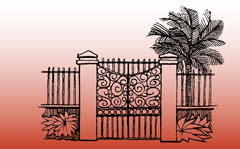Abstract
This paper will discuss a discovery system redesign project at the University of Houston Libraries, and in particular the Discovery Redesign Team’s collaborative, user‐centered approach. Throughout the redesign process, the team collected information about the needs and expectations of internal and external users regarding the Library’s discovery system. The team worked with two internal working groups to gather and evaluate the collected information. The results of this evaluation were used to make user‐centered design decisions.
The Discovery Redesign Team worked with the Discovery Advisory Group, made up of library employees from various departments, to seek feedback and suggestions throughout the redesign process. Working collaboratively with this Group informed design decisions made by the team while also generating buy‐in for the discovery redesign.
The team worked with the Discovery Usability Group to collect information from end‐users to inform the Team’s design decisions. The Committee held focus groups with the Library Information Desk staff to learn how the discovery system was serving users, and where it was falling short; they conducted usability tests with students to find out where users were experiencing breakdowns while completing common tasks. The methodologies and findings of the team’s various activities will be discussed.
Changes to system interfaces affect both internal and external users. The University of Houston’s discovery system redesign is an example of a successful, user‐centered, collaborative design project.
Figure 1: Primo: Soft rollout with minimal customizations
figure2.jpg (208 kB)
Figure 2: Primo: Results of redesign, Summer 2015
Next Steps in Discovery Implementation: User‐Centered Discovery System Redesign
This paper will discuss a discovery system redesign project at the University of Houston Libraries, and in particular the Discovery Redesign Team’s collaborative, user‐centered approach. Throughout the redesign process, the team collected information about the needs and expectations of internal and external users regarding the Library’s discovery system. The team worked with two internal working groups to gather and evaluate the collected information. The results of this evaluation were used to make user‐centered design decisions.
The Discovery Redesign Team worked with the Discovery Advisory Group, made up of library employees from various departments, to seek feedback and suggestions throughout the redesign process. Working collaboratively with this Group informed design decisions made by the team while also generating buy‐in for the discovery redesign.
The team worked with the Discovery Usability Group to collect information from end‐users to inform the Team’s design decisions. The Committee held focus groups with the Library Information Desk staff to learn how the discovery system was serving users, and where it was falling short; they conducted usability tests with students to find out where users were experiencing breakdowns while completing common tasks. The methodologies and findings of the team’s various activities will be discussed.
Changes to system interfaces affect both internal and external users. The University of Houston’s discovery system redesign is an example of a successful, user‐centered, collaborative design project.
